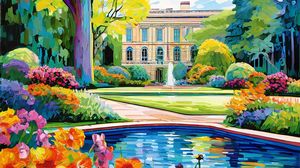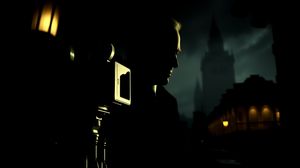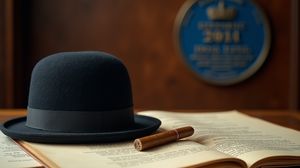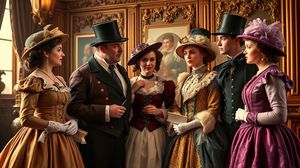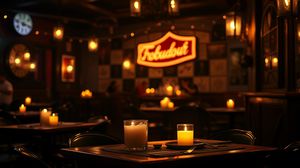
The blue plaque commemorating T.S. Eliot in Kensington recognizes the influence and contributions of one of the most prominent figures in modernist literature. T.S. Eliot, an American-British poet, essayist, and playwright, is arguably best known for his works such as "The Waste Land" and "The Love Song of J. Alfred Prufrock". The plaque is an emblem of his presence and impact on English literature.
This blue plaque is located at 3 Kensington Court Gardens, which was one of Eliot's residences during his time in London. It serves as a testament to the formative role this city played in his career. London wasn't just a home for Eliot but also a source of inspiration, and his works often reflect the intricate tapestry of life in this vibrant city.
Interestingly, Eliot didn't immediately pursue a career as a writer. Before establishing himself as a literary giant, he worked at Lloyds Bank in London. It was during this time that he penned some of his most significant works, balancing the drudgery of a day job with his passion for poetry.
One quirky fact about T.S. Eliot is that he was a major fan of night-time walks around the city. He often used these quiet moments of solitude to ruminate on his thoughts, with the streets of London providing a backdrop to his poetic vision. The echoes of these nocturnal excursions can be felt in his atmospheric writing.
Despite his serious demeanor, Eliot had a playful side which manifested in his work "Old Possum's Book of Practical Cats", a light-hearted collection of whimsical poems about feline characters. This collection later inspired the popular musical "Cats" by Andrew Lloyd Webber.

Making the Most of Your Visit:
When you visit T.S. Eliot's Blue Plaque in Kensington, make sure to take a moment to appreciate the beautifully historic architecture of the area. Kensington is known for its elegant buildings and picturesque streets, and 3 Kensington Court Gardens is a fine example.
If you're an Eliot aficionado, bring along a copy of "The Waste Land" or "The Love Song of J. Alfred Prufrock" to read while you're there. There's something quite magical about connecting with his words right near where they were crafted.
Try and time your visit to coincide with a quieter time of day. Early mornings or late afternoons on weekdays can be less busy, allowing you more contemplative solitude to ponder the impact of Eliot's London life on his works.
Since T.S. Eliot was known for his love of night-time walks, consider planning your own evening or dusk stroll around this lovely part of London. Kensington at twilight offers a different, almost poetic perspective that might inspire your own creativity.
For a bit of literary fun, follow up your visit with reading or re-reading Eliot's "Old Possum's Book of Practical Cats." Knowing that these whimsical tales were penned by the same author of "The Waste Land" adds a delightful layer to your understanding of Eliot's personality.

Visiting Times & Costs:
The T.S. Eliot Blue Plaque in Kensington is publicly accessible at any time, as it is located on the exterior of a building. There is no cost to visit, making it a freely accessible site for all.
Being a blue plaque on a residential property, there are no specific accessibility features provided. Visitors are advised to consider the general accessibility of the surrounding area, which is typical of London streets with potential variations in paving and curb heights.

Address & Map:

Nearby:


